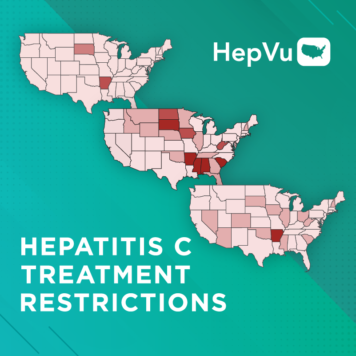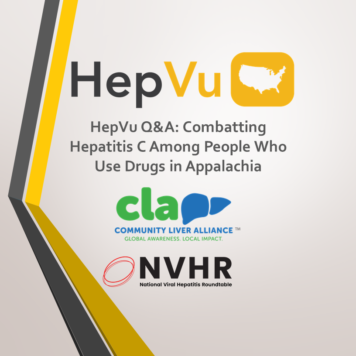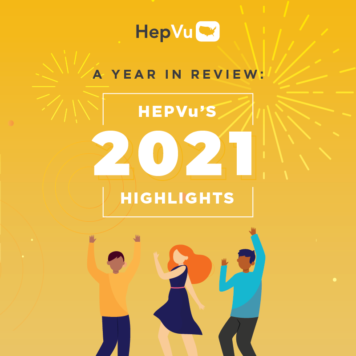The Hep ElimiNATION project is a partnership between The O’Neill Institute for National and Global Health Law at Georgetown University Law Center (O’Neill Institute), the National Viral Hepatitis Roundtable (NVHR), and the Center for Health Law and Policy Innovation (CHLPI) at Harvard Law School.
Sonia Canzater, JD, MPH, is an assistant director at the O’Neill Institute and oversees the Hepatitis Policy Project. Adrienne Simmons, PharmD, MS, BCPS, AAHIVP is the Director of Programs for NVHR.
Q: Hep ElimiNATION recently launched Hep ElimiNATION: A National Evaluation of States’ Capacity for Viral Hepatitis Elimination, which assesses the policies and strategies impacting viral hepatitis elimination in the United States. What was the inspiration for this project and what do you hope to accomplish?
Sonia: Part of the inspiration was the success of the Hepatitis C: State of Medicaid Access program, which was in collaboration with the Center for Health Law and Policy Innovation (CHLPI), the third partner on the Hep ElimiNATION project. Hepatitis C: State of Medicaid Access was structured around assessing state Medicaid programs and identifying the barriers around Hepatitis C treatment to bring that information to the forefront and raise public awareness around the need to remove those barriers. As we saw improvements over the past few years in that space, we also saw opportunities to advance and look at other metrics related to improving viral hepatitis elimination here in the U.S. We wanted to take that model and evolve it to foster those same improvements in the different jurisdictions. That was the inspiration that led to the development of Hep ElimiNATION.
Adrienne: We also wanted to design an advocacy tool that could be used by anyone – advocates, patients, providers, and the public – to elevate the profile of viral hepatitis elimination in conversations with policymakers and communities. While the term “elimination” is commonly used among public health experts, it can be unfamiliar to the public and policymakers. The report cards break down elimination into policy and programmatic considerations at the individual state level. We wanted them to be as easy to use as possible, ensuring that persons who are not lawyers or epidemiologists could use them as a conversation starter with policymakers and with their community.
Another goal of this project is to offer guidance to jurisdictions around their viral hepatitis elimination strategies and to collect and centralize information resources. All states are going to be required to develop an elimination plan if their health department receives viral hepatitis funding from the Centers for Disease Control (CDC). But there is no go-to resource that centralizes best practices and models being implemented across the country. Often when states are going through their elimination planning processes—and all states are at different phases in that process—they recreate the wheel. We wanted to minimize some of that re-creation so that we can make sure we are developing the most effective strategies efficiently, given the limited resources available for viral hepatitis elimination.
Q: This project is built around a scoring rubric that assesses states’ readiness to eliminate viral hepatitis. What considerations and metrics went into developing this rubric?
Sonia: The project looks at a lot of different factors that have been identified—through both scientific research and key informant feedback—to identify best practices and highlight the most effective strategies for viral hepatitis elimination. We also looked at the National Viral Hepatitis Strategic Plan and aligned many of the scoring metrics around the priorities that have been identified in that plan.
Viral hepatitis elimination program needs arise from different areas—for example, what does the landscape look like around harm reduction laws? What does the landscape look like around funding? What we are trying to measure is where states land along the continuum of these different needs to create a comprehensive set of approaches that best advance elimination. And again, we want to present this information in ways that are easily understood by the general public. When we were thinking through Hep ElimiNATION, we knew what we wanted to measure but we also had to think about how to phrase these metrics to convey them to our audience.
Adrienne: It is important for people to understand that this rubric assesses whether various policy and programmatic strategies are in place, not how effective those strategies might be. It doesn’t necessarily tell whether a state is on track to eliminate viral hepatitis by 2030. Instead, it assesses, “Do they have the right infrastructure to begin to eliminate viral hepatitis?” And, notably, the assessment is exclusively based on publicly available information.
Q: You are also planning to release a Viral Hepatitis Elimination Toolkit that will define best practices for elimination programs. When do you anticipate that this toolkit will be available, and how will this toolkit help states improve their elimination strategies?
Sonia: Hep ElimiNATION will release a comprehensive compilation of viral hepatitis resources in mid-late April. The first of a series of toolkit modules that focus on specific elimination topics will be released in late 2022. We know that viral hepatitis coordinators and state public health administrators are doing excellent work with the resources that they do have. And we recognize that resources are limited. Like Adrienne said, we wanted to centralize and warehouse the best practices that can support viral hepatitis elimination across the U.S. The toolkit will provide us with the opportunity to highlight some of the great and innovative work that is being done by many jurisdictions in the hope that it will be replicated elsewhere.
We hope that these best practices will eventually become standards so that ultimately the outcomes look very similar across the different states. We also want to provide an opportunity for jurisdictions to learn from one another since different jurisdictions are in different places in their planning and response to viral hepatitis elimination. Providing an opportunity for states to learn from one another and to see what other jurisdictions are doing is important. We also want jurisdictions to be able to use those practices as springboards to start conversations with their leadership and legislators in order to change the policy landscape within their jurisdiction.
Q: Hep ElimiNATION is designed as an advocacy tool. How do the report cards enable advocates to move the needle on policy?
Adrienne: When you think about meeting with a legislator, typically you have a very limited amount of time – 15 or 30 minutes. The legislator or staffer may not have any familiarity with viral hepatitis—or public health for that matter. So in those 15-to-30-minutes, you must explain what viral hepatitis is, then explain what elimination is, and then explain what the needs are in your community. Although you may not be able to touch on every single component that impacts elimination in your meeting, this tool helps facilitate the conversation and serves as a leave-behind resource. It also gives some teeth to our requests for funding. Beyond sharing the viral hepatitis burden in our communities and illustrating health disparities, we can quickly highlight gaps in specific strategies that are needed to eliminate viral hepatitis.
The report cards can also help coalitions identify opportunities for community organizing. As various states are putting together their elimination plans, they are also developing organic coalitions. It’s easy to be overwhelmed by the sheer number of strategies that impact viral hepatitis elimination. This tool gives coalitions an idea of opportunities around which to organize.
Q: What comes next for the Hep ElimiNATION project?
Sonia: We are developing tools to help support our advocates. We hope to have some webinars and perhaps print materials that summarize specific topic areas, like harm reduction laws or surveillance needs around viral hepatitis, to support and elevate the work that is being done across the country by our viral hepatitis coordinators and our public health agencies. We have heard from a good number of jurisdictions that know what needs to be done in their states but have hit roadblocks. What are some things that states similar to them have done? Which states may have had more success on some of these fronts? Facilitating those conversations and building that capacity amongst jurisdictions and amongst our public health leaders is another strategy that we’re looking to advance in the future with this project.
Adrienne: We encourage people to take advantage of the 90-day public comment period by April 15th. Anyone can submit comments or feedback on their state’s grade, and we will update and re-release grades this summer. Hep ElimiNATION is a living project that will be re-evaluated annually. The evaluation criteria, which is not all-encompassing, will change as elimination efforts change. There were strategies that we wanted to include in the rubric that either weren’t publicly available or weren’t the most practical given the current state of elimination efforts. We expect this project to evolve over time, and the goalposts will—and should—move as we inch closer and closer to elimination.




